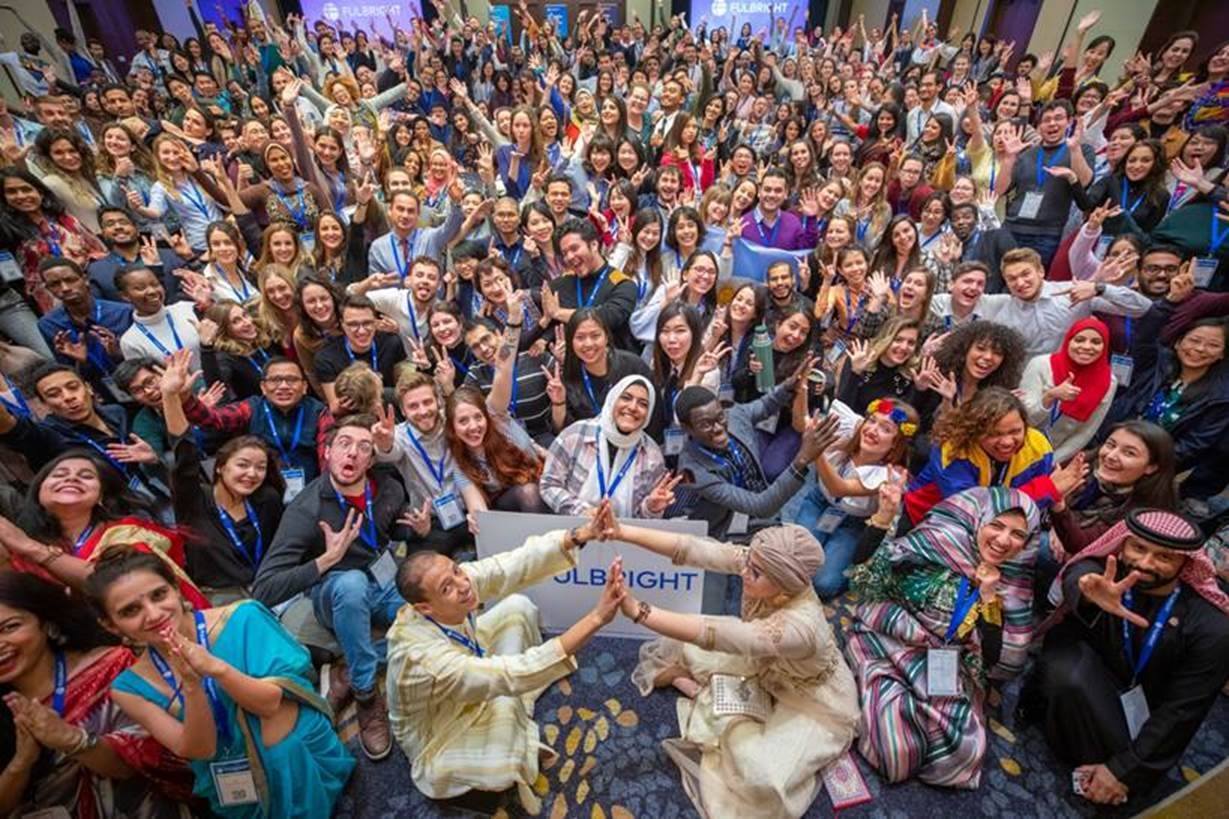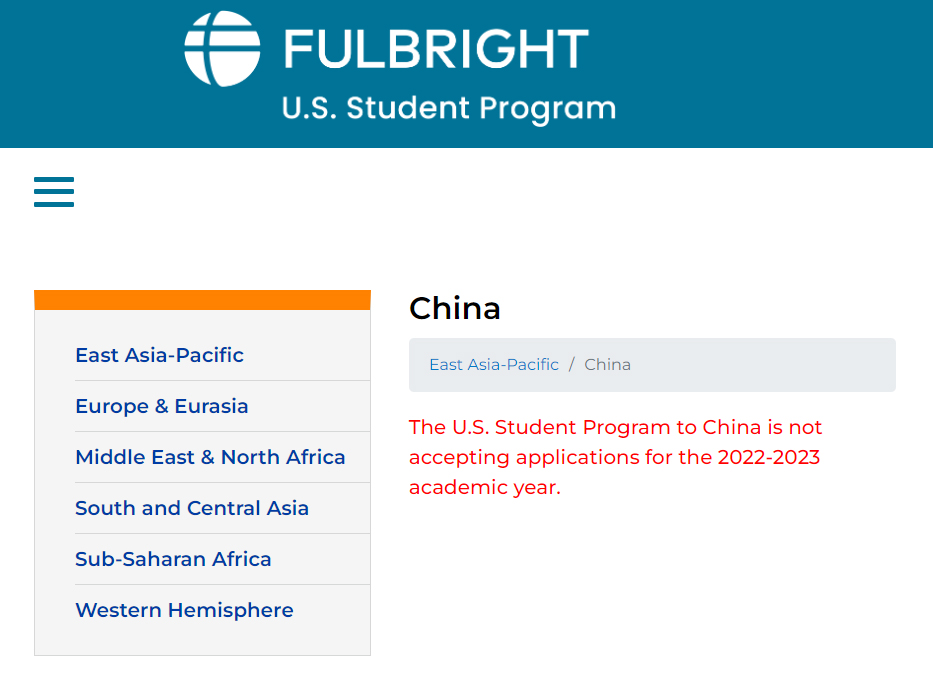Editor’s note:
In this interview with KJ Kerr of China-US Focus, Dr. Keisha Brown, made specific suggestions about how to bring diverse voices to the China space. She is an advocate for Fulbright programs returning to China and encouraging students to take the less-traveled path, such as going into rural area to diversify the American perspective. Her powerful personal narrative is one of life enrichment that can be replicated by new generations. This interview has been lightly edited for clarity.

The Fulbright Program, the flagship international academic exchange program, is sponsored by the U.S. government in partnership with more than 160 countries worldwide.
KJ Kerr
As tensions between the U.S. and China have continued to increase, how can we motivate, support and prepare future leaders to rethink and possibly even recalibrate the competition/cooperation scale? And how can we equip them against the negative noise surrounding U.S.-China relations?
Keisha Brown
As we think about future leaders and how to prepare them for engaging in the U.S.-China space, I think one question to think about is how we talk about China now and how is that impacting students who might be interested in the China space? So, thinking about students who may have taken Chinese or may be thinking about it … in many cases, the current political narrative is vilifying more than amplifying the cooperation aspect of the U.S.-China relationship. So what are we doing to encourage students to think about China as a cooperative partner moving forward?
In terms of equipping students, it’s difficult to think about. One problem with encouraging Chinese language education is that opportunities have dropped off in recent years. How do we continue to find resources and funding to encourage education in Chinese language skills? And how do we create opportunities for students to engage with China in different ways? Whether it’s through virtual study abroad or immersion programs that have popped up or traditional student exchange programs, it’s important to find ways to help students understand the U.S.-China relationship beyond one-dimensional skills. Also, building and supporting educational courses and finding ways to connect with and support programs that already exist.
KJ Kerr
What are some solutions to the problem of finding funding that’s lacking and encouraging universities to offer the courses you suggest?
Keisha Brown
One thing I always advocate is bringing the Fulbright back to China. Second, we need to encourage collaboration between different universities — those that have existing programs and those that have students who have an interest but might not have the resources on their campus. We can also think about resources at the nonprofit level. How can nonprofits and other non-educational but also very important institutions work with educational sites and work with the government to find ways to be the connective tissue to create bridges and programs between different groups organizations, so we find ways to encourage students and continue to build the pipeline? In thinking about the China experts of the next generation, we [don’t want to be] concerned that they are not there, or that they have a one-sided perspective that’s not multifaceted. [The latter] is needed for the U.S.-China relationship.

The Fulbright Program for China and Hong Kong has been terminated since July 14, 2020 under the executive order signed by former U.S. President Donald Trump.
KJ Kerr
What does this look like from an educational and DEI perspective? What are some ways that we can increase diversity within the China policy space?
Keisha Brown
In terms of thinking about the future of U.S.-China relations and education, and also from a diversity, equity, and inclusion perspective, thinking about diversity is something that’s very personal to me, which is why we created the Black China Caucus in 2020. First comes building community and showing the need for diversity — diverse perspectives, diverse experiences. It’s people’s experiences with China, their background with China, how those diverse perspectives can lead to a more nuanced understanding of the way in which the Chinese government and people are engaging in the U.S.-relationship.
I’m also thinking about the value of inclusion. Inclusion of non-traditional voices that are involved, or non-traditional perspectives in terms of the U.S.-China relationship. So thinking through how we can expand the pipeline, where it’s not the same programs or funding going to the same institutions but expanding that to create different opportunities for students or for those who work in the China space — for advancement, for mentorship, for engagement. America is a diverse place, and when delegations go to China, or they’re working with China, that delegation should reflect what America actually looks like. The table should be diverse.
And when we think about people who are speaking about China, who are the China hands or the China experts? [We should find] individuals who are experts in different spaces and incorporate them within the talks, on the panels, on the boards, in interviews. That way, people see a diverse perspective of voices, backgrounds and experiences when talking about China. Representation matters. And that will really increase diversity in the space, and in many cases move the relationship forward.
KJ Kerr
How does diversity within the U.S.-China policy space contribute to a more comprehensive and nuanced understanding of the bilateral relationship?
Keisha Brown
I think diversity in the U.S.-China space does a lot of positive things. One, it allows for a multitude of perspectives to engage on pressing questions, to understand what is happening in China but also what’s happening in the U.S. We need to understand that each country and its policymaking apparatus is not a monolith. There is diversity within these countries. How do we engage in new solutions, so we’re not coming back to the same solutions we’ve done before that have not proven always as fruitful as possible?
One thing I’ve noticed is engaging more with smaller places. Instead of going to the large coasts, let’s encourage engagement with the Midwest, or the Southeast — spaces where there is a huge trend of contention and interest but where those interests are not always talked about.
Thinking about how we engage with traditional study abroad programs, how can we diversify that so when Chinese students come to the U.S. they’re not going to the same institutions? Let’s encourage them to go to other schools that are just as capable but not on the radar of Chinese students and Chinese parents. Thinking about the U.S. side, let’s encourage students to go beyond the Beijings and Shanghais. But let’s also encourage students to travel, to go to other places, to go to rural areas, to go to smaller towns, to meet people and put your skills to use.
So I think diversity allows for us to have deeper understanding, and allows us to have a more solution-oriented perspective, versus one of dominance or the kind of cooperation/competition in which competition dominates cooperation.
KJ Kerr
How can the inclusion of diverse voices and backgrounds within the U.S.-China policy space lead to even more effective strategies for addressing many global challenges, such as climate change or pandemics? And then how does that impact issues related to economic competition or technological innovation?
Keisha Brown
Diverse voices and backgrounds in the U.S.-China space can also help address larger global issues and challenges. It allows for more solution-oriented ideas. For example, I work at Tennessee State University, which is a historically Black institution. But it’s also a land grant institution, which means we have an agriculture program. And so we’re thinking about the larger issue of food supply or food scarcity issues, which are global challenges. What can we do as a school and institution, one that has a huge agriculture program and has received many grants? How can we cooperate and work with organizations and institutions and even universities in China that might have similar issues and questions they’re trying to solve?
How can we think about non-traditional ways of building pathways with China, and how can we expand to the point where we’re looking at, for example, land grant institutions and food issues as a new way of rebuilding or re-establishing relationships with China? How can we expand the way we have traditionally solved those questions and concerns? And how does that lead to maybe looking at different institutions that have not always been a part of the China conversation. Because for better or worse, for both the U.S. and China, we are going to be together. Our economies, our supply chains, a lot of what we do every day — you name it. We are interconnected and intertwined. And that’s not going to go away, despite the language and the rumors of decoupling. Decoupling would be an ugly image to process that no one would benefit from.
KJ Kerr
You have discussed some thoughts on those educational, people-to-people exchanges, and thinking about that specifically for students and study abroad, we’ve seen many of these programs reduced in recent years. How do you think we can regain some of those exchanges and increase those exchanges, both for students but also for young adults generally? Where’s the hope for the future of the relationship?
Keisha Brown
I do have hope for the future. I’m trying to be optimistic because this is a space I’ve devoted my life’s research to. And I tell people all the time, every time I go back to China, it feels like I’m going to my second home. It’s just that comfortable for me. But I have hope because I’ve had a chance to work with young students both here and in China who want to engage and have diverse conversations that have more nuance. I worked with two graduate students a couple of years ago who were addressing issues of race and anti-Blackness in China in a way that I was never expecting. They wanted to address some of these larger questions and challenges, and how we better engage with the U.S. and with the world, as well as how we think about some of our own internal issues and concerns.
I think there is hope because of the younger generations. They want to continue the relationship; it’s just a matter of how we provide them the tools to do so. And I do think [part of that is] providing funding, providing opportunities and providing access to go to China. My philosophy is exposure and opportunities. My first experience going to Beijing for a week was kind of it for me. It solidified my interest and love for what I was doing through my research in China. Also the experiences. … You can’t replicate experiences, and so having the ability to have an experience, to go, and to have your own story is important. Everyone has a story of “My first time in China” or “When I knew I wanted to study China” or “Why I studied China.” And that comes from exposure and experience.
So [we need to] find opportunities and funding, as I said, bring back the Fulbright and create other pipelines, create new pathways, create new exchanges for individual institutions, expand the funding, create more collaborations, and make it so that students who want to can do those things. Chinese is still a critical language. And it’s still a critical skill that absolutely needs to be championed. And so we need to use that as a means of expanding engagement, but also allowing students to have their own experiences and exposures, which will then increase our ability have hope in the future for the U.S.-China relationship.